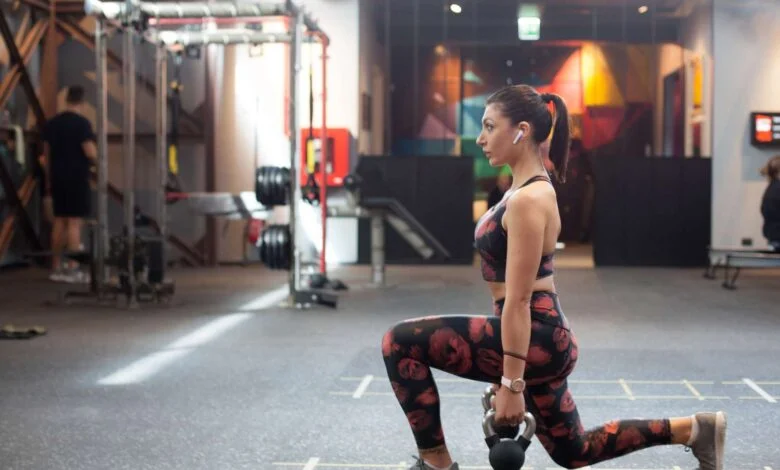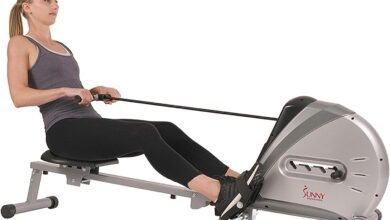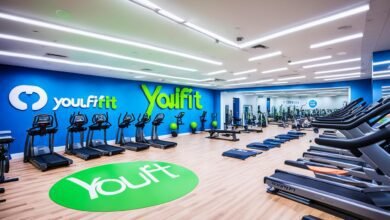Maximize Your Leg Day Effective Workouts for Stronger Lower Body

With regards to developing fortitude and power leg workouts stand apart as urgent schedules for generally fitness. Whether you’re a carefully prepared competitor or a novice hoping to tighten up integrating a scope of activities into your leg day schedule can essentially influence your lower body strength. In order to get the most out of your leg workouts here’s a breakdown of some essential exercises.
Squats: The Ruler of Leg Activities
Squats rule with regards to leg workouts. This compound activity focuses on different muscle bunches including the quadriceps, hamstrings, glutes and surprisingly the center. Squats whether done with a barbell, dumbbells or just your body weight work a variety of muscles and build strength in the lower body as a whole.
- Lunges: Versatile and Effective
Leg workouts with lunges are versatile and effective. Forward thrusts, switch rushes, strolling lurches and sidelong jumps target various muscles while upgrading equilibrium and steadiness. These activities connect with the quadriceps, hamstrings, glutes and lower leg muscles making them an important expansion to any leg day schedule.
- Deadlifts: Developing Fortitude Starting from the earliest stage
While deadlifts essentially work the back chain they vigorously include the legs. This exercise focuses on the hamstrings and glutes as well as draws in the lower back and center muscles. Appropriate structure is significant in deadlifts to forestall injury and augment their viability.
- Calf Raises: Focusing on Lower Legs
Often overlooked calf muscles play a significant role in lower body strength and stability. Calf raises whether performed with bodyweight, dumbbells or on a machine effectively target these muscles. Adding variations like single-leg calf raises can further enhance strength and balance.
- Leg Press: Targeting Muscle Groups
The leg press machine is a staple in numerous leg workouts. It essentially focuses on the quadriceps hamstrings and glutes while offering help for the back.Adjusting foot placement on the platform can shift the emphasis on different muscle groups.
Tips for Effective Leg Workouts:
- Proper Legitimate Structure over Weight: Center around keeping up with legitimate structure in each activity to stay away from injury and augment muscle commitment.
- Moderate Over-burden: Progressively increment the opposition or reiterations to challenge your muscles and advance development.
- Incorporate Varieties: To target various leg muscles and avoid plateauing incorporate a variety of exercises and variations.
- Rest and Recuperation: To avoid overtraining and encourage muscle growth give your muscles time to recover between workouts.
Use Weights for Leg Workouts
Incorporating weights into your workouts adds resistance intensifying the challenge for your muscles. Over time, this additional challenge encourages muscle development and strength gains. By continuously expanding the weight utilized in practices like squats, lurches and deadlifts you give an ever-evolving over-burden that energizes muscle transformation and development. Then again, bodyweight activities can be amazingly compelling particularly for amateurs. They permit you to foster strength involving your body’s weight as opposition without the requirement for extra hardware.Movements like bodyweight squats, lunges and calf raises engage the muscles effectively helping you build a foundation of strength and control.

For beginners mastering proper form and technique using bodyweight exercises is crucial before adding external weights. This foundation not only reduces the risk of injury but also ensures that as you progress to using weights you maintain good form maximizing the effectiveness of each exercise.
Normal to feel knee pain during leg Exercises
Encountering distress or torment in your knees during practices like squats or jumps is a sign that something may be off with your structure. Appropriate strategy is essential to keep away from unnecessary weight on the knees. Guaranteeing right arrangement and development examples can altogether decrease the burden on this joint.When performing squats or lunges pay close attention to your form. Your knees should align with your toes and not extend past them when bending. Keep your weight evenly distributed on your heels and mid foot preventing excessive pressure on the knees. Additionally keeping your back straight and working your core muscles can ease knee strain.
Relentless knee torment during practices isn’t typical and ought not to be overlooked. On the off chance that you keep on encountering uneasiness even in the wake of revising your structure looking for direction from a fitness expert or medical services provider is fundamental. They can survey what is going on give explicit exhortation and even propose changed practices that will not fuel the issue.
Cardio along with Leg Workouts
Integrating cardio activities, for example, cycling or running close by leg workouts can fundamentally support your general fitness level. Cardiovascular exercise raises your heart rate, which improves endurance and heart health. When joined with leg workouts this cooperative energy offers an extensive way to deal with fitness.Balancing strength training specifically leg workouts with cardio sessions creates a well-rounded routine. Leg exercises focus on building muscle strength power and stability while cardio activities elevate your heart rate and improve your stamina.
Cardiovascular exercises engage your leg muscles differently than strength training promoting endurance and helping with recovery between strength sessions. Additionally they aid in burning calories contributing to weight management and overall health. For instance running or cycling engages various leg muscles, complementing the targeted approach of strength-based leg workouts. This combination not only improves muscular strength but also enhances the functional capacity of your legs for daily activities and sports.
Prioritize certain leg muscles Over Others
Keeping up with adjusted muscle improvement across your legs is key for improving by and large strength and diminishing the gamble of lopsided characteristics or likely wounds. It’s imperative to zero in on practices that target different muscle bunches inside the legs for example the quadriceps, hamstrings, glutes and calves to guarantee complete and adjusted leg strength.
Quadriceps: To focus on the facade of your thighs (quadriceps) practices like squats, thrusts, leg expansions and step-ups are exceptionally compelling. These developments connect with the quadriceps muscles supporting strength and steadiness.
Hamstrings: Fortifying the rear of your thighs (hamstrings) is similarly significant. The hamstrings are specifically targeted in exercises like deadlifts, hamstring curls, Romanian deadlifts and glute-ham raises. These exercises help you stay balanced and lower your risk of muscle imbalances between your front and back thighs.
Glutes: Your gluteal muscles are among the biggest and most impressive muscles in your body. Glute-targeting exercises like squats, lunges, deadlifts and hip thrusts are excellent. Solid glutes add to leg strength as well as help in general soundness and stance.
Calves: Frequently disregarded the lower leg muscles assume a critical part in lower body strength. Calf raises both situated and remaining as well as hopping practices like leap squats and box bounces really connect with the lower leg muscles upgrading lower leg strength and security.
Each of these muscle groups should be targeted by exercises in a comprehensive leg workout routine. Fluctuating your activities guarantees that all region of the legs are invigorated advancing adjusted muscle improvement. It’s fundamental to keep up with this equilibrium to forestall any single muscle bunch from turning out to be essentially more grounded than the others which could prompt lopsided characteristics and likely injury.
Progress in my leg Workouts
Advancing and evolving your workouts over time is fundamental for ongoing improvement in your fitness journey. Progression is the cornerstone of achieving greater strength and muscle development. To continually challenge your muscles and experience growth there are several progressive methods to incorporate into your routine.
Increasing Weight, Reps or Sets: As your strength improves gradually increase the weight you lift during exercises. This added resistance stimulates muscle adaptation and growth. Comparatively enlarging the quantity of reiterations or sets difficulties your muscles advancing perseverance and strength gains.
Moderate Over-burden: Pushing your muscles to their limit on a consistent basis is how you apply the progressive overload principle. By step by step expanding the pressure or request put on them whether through heavier loads expanded reiterations or additional difficult varieties you support ceaseless improvement.
Varieties and Adjustments: Acquainting varieties or alterations with practices is one more compelling method for keeping your exercises new and testing.Altering angles using different equipment or trying new variations of familiar exercises can engage muscles differently and prevent plateauing.
Specific Exercises for improving Flexibility in the Legs
Including specific yoga or stretching routines focusing on your legs can significantly enhance your leg flexibility over time. These schedules incorporate different stretches that explicitly target significant leg muscle bunches advancing expanded adaptability and scope of movement.
Hamstring Stretches: Extending the hamstrings reduces snugness toward the rear of your thighs. Practices like forward twists situated or standing hamstring stretches or utilizing a yoga tie to develop the stretch can successfully further develop hamstring adaptability.
Quad Stretches: Extending the quadriceps the muscles on the facade of your thighs is fundamental for adjusted leg adaptability. Strategies, for example, standing quad extends, stooping quad stretches or utilizing yoga presents like Pigeon Posture can assist with improving quad adaptability.
Yoga Postures: Multiple leg muscles are simultaneously engaged when yoga poses like Downward-Facing Dog, Warrior Pose, Pigeon Pose and Triangle Pose are included. These postures prolong and extend leg muscles continuously improving adaptability and advancing more noteworthy versatility.
Final Thought
Building a more grounded lower body includes a balanced way to deal with leg workouts. By integrating practices like squats, lurches, deadlifts, calf raises and leg presses while focusing on structure and movement, you can really reinforce your legs work on in general dependability and improve your fitness level. Keep in mind that consistency and proper technique are essential if you want to get the most out of your leg day routine.




